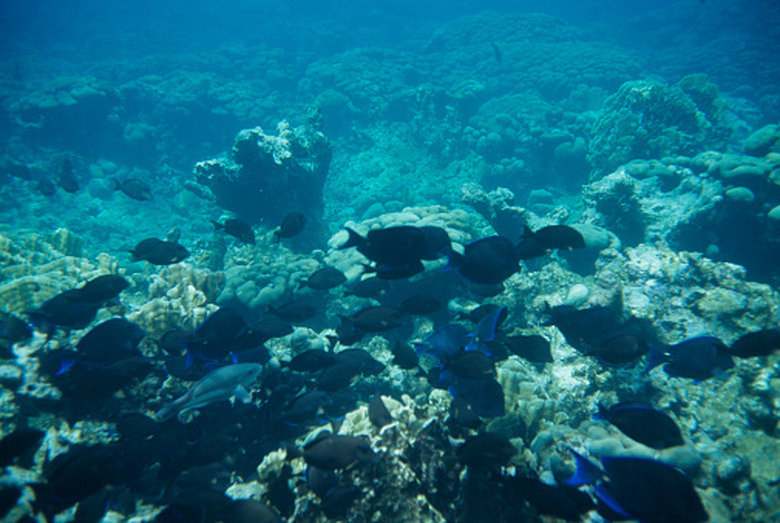What Types Of Fungi Grow In The Ocean?
Only five percent of the fungi in the world live in the oceans, according to the UN University. Compared w ith other environments, ocean conditions are relatively stable, but few fungi — other than yeasts — have been found floating freely in the water. Most ocean fungi live on animals and plants, or dead and decaying matter. The known species of marine fungi can be grouped in several ways.
Preferred Habitat
Preferred Habitat
Some marine fungi only grow and produce spores in the oceans or estuaries. These obligate marine fungi would not survive on land or in fresh water. In addition, they typically spend all or part of their life cycle submerged in water. Other fungi that live in the ocean are actually from fresh water or land environments. These facultative marine fungi can grow in the ocean but may not produce spores there.
Spore Production
Spore Production
Marine fungi can be grouped by the way in which they reproduce. The Basidiomycetes produce their spores in special cells called basidia. The Ascomycetes, on the other hand, produce their spores in an internal sac called an ascus. Unlike the other two types, mitosporic fungi reproduce asexually, meaning they produce offspring that are identical to the parents. These fungi consist of the Hyphomycetes and Coelomycetes.
Food Source
Food Source
Because most marine fungi don't float freely in the ocean like plankton, they use other organisms as a food source. Parasitic marine fungi feed on living organisms, including animals, shells and algae. Saprophytic — also known as saprobic — fungi obtain their nutrition from decaying matter, such as animals, shells, algae, plants or wood. In addition, there is a special class of fungi called the lichens that consist of fungi with algal cells inside that convert sunlight to energy.
Disease
Disease
As on land, some fungi living in the oceans cause diseases in animals living there. These fungal diseases affect fishes, mollusks, crustaceans and corals, including populations of animals used by people as food. Fungi in the ocean rarely harm plants, although cases have been reported of fungi infecting marsh grasses and mangrove vegetation. Fungi commonly infect marine algae, diatoms and cyanobacteria.
References
- Offwell Woodland and Wildlife Trust: Types of Fungi
- McGraw-Hill Dictionary of Environmental Science; saprobic; June, 2003
- The University of Southern Mississippi Gulf Coast Research Laboratory: Species of Higher Marine Fungi
- Laboratory and Field Investigations in Marine Life; Marine Fungi; James L. Sumich; March 2008
Cite This Article
MLA
Radcliffe, Shawn. "What Types Of Fungi Grow In The Ocean?" sciencing.com, https://www.sciencing.com/types-fungi-grow-ocean-8467074/. 24 April 2017.
APA
Radcliffe, Shawn. (2017, April 24). What Types Of Fungi Grow In The Ocean?. sciencing.com. Retrieved from https://www.sciencing.com/types-fungi-grow-ocean-8467074/
Chicago
Radcliffe, Shawn. What Types Of Fungi Grow In The Ocean? last modified March 24, 2022. https://www.sciencing.com/types-fungi-grow-ocean-8467074/
